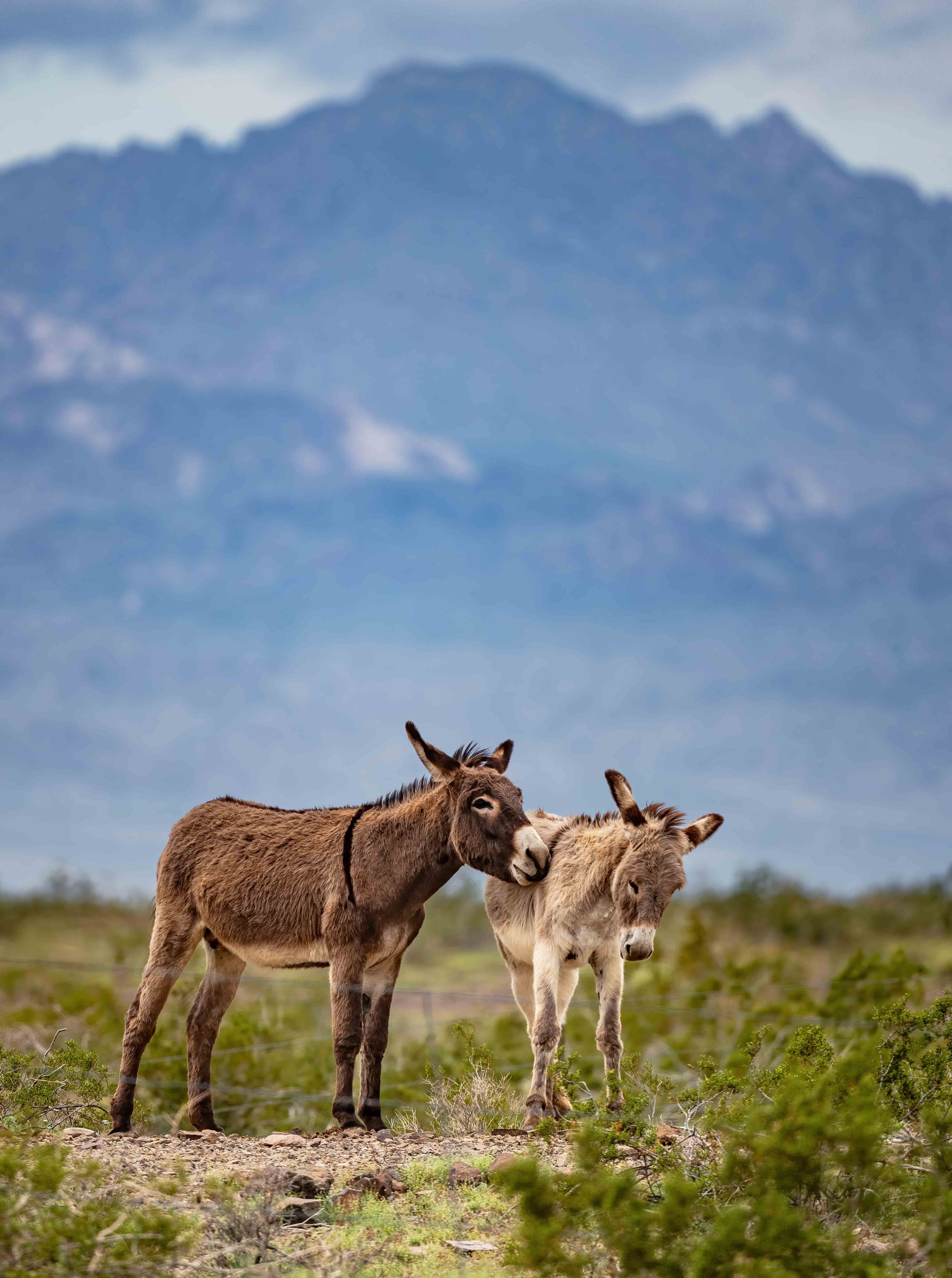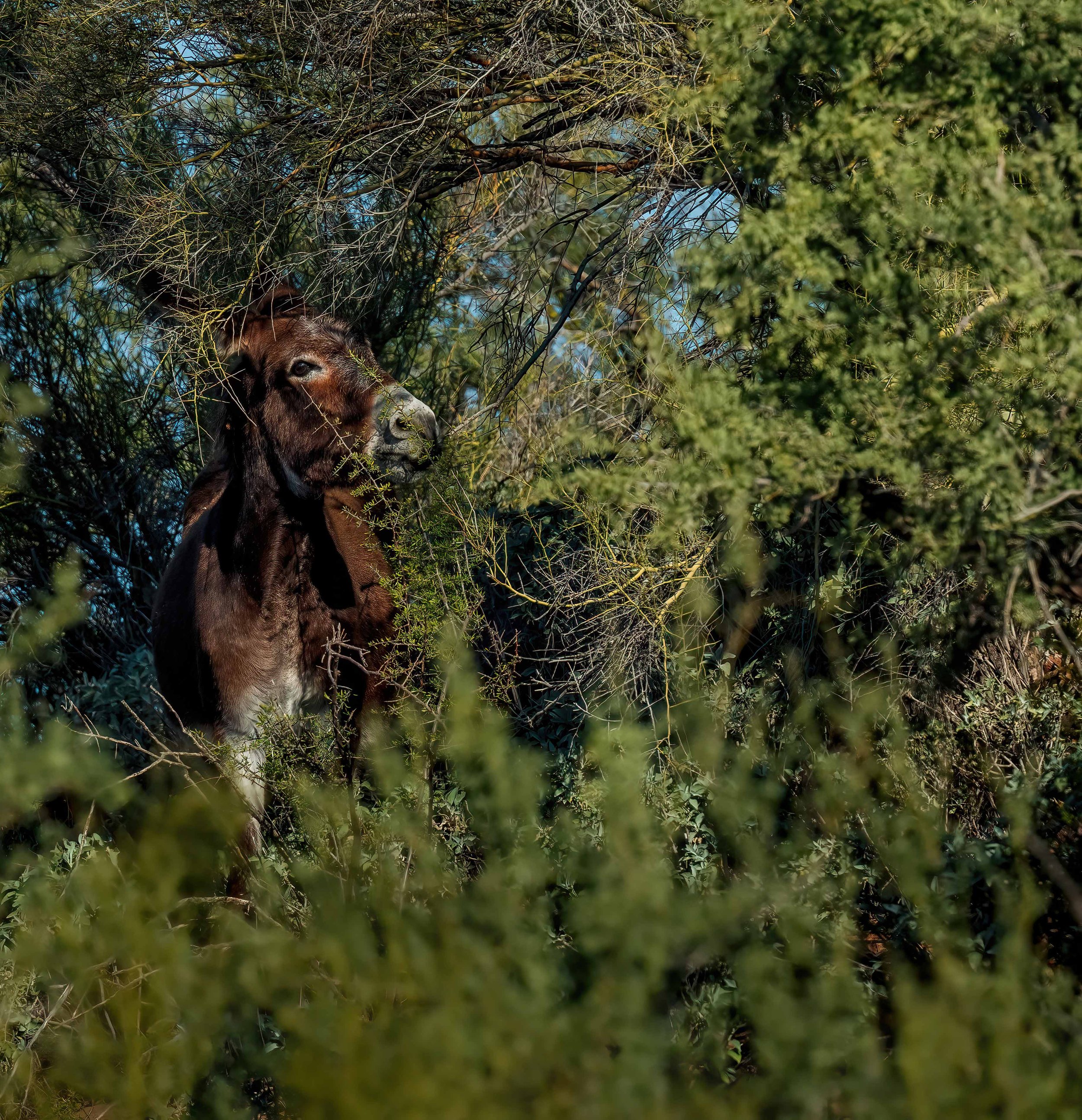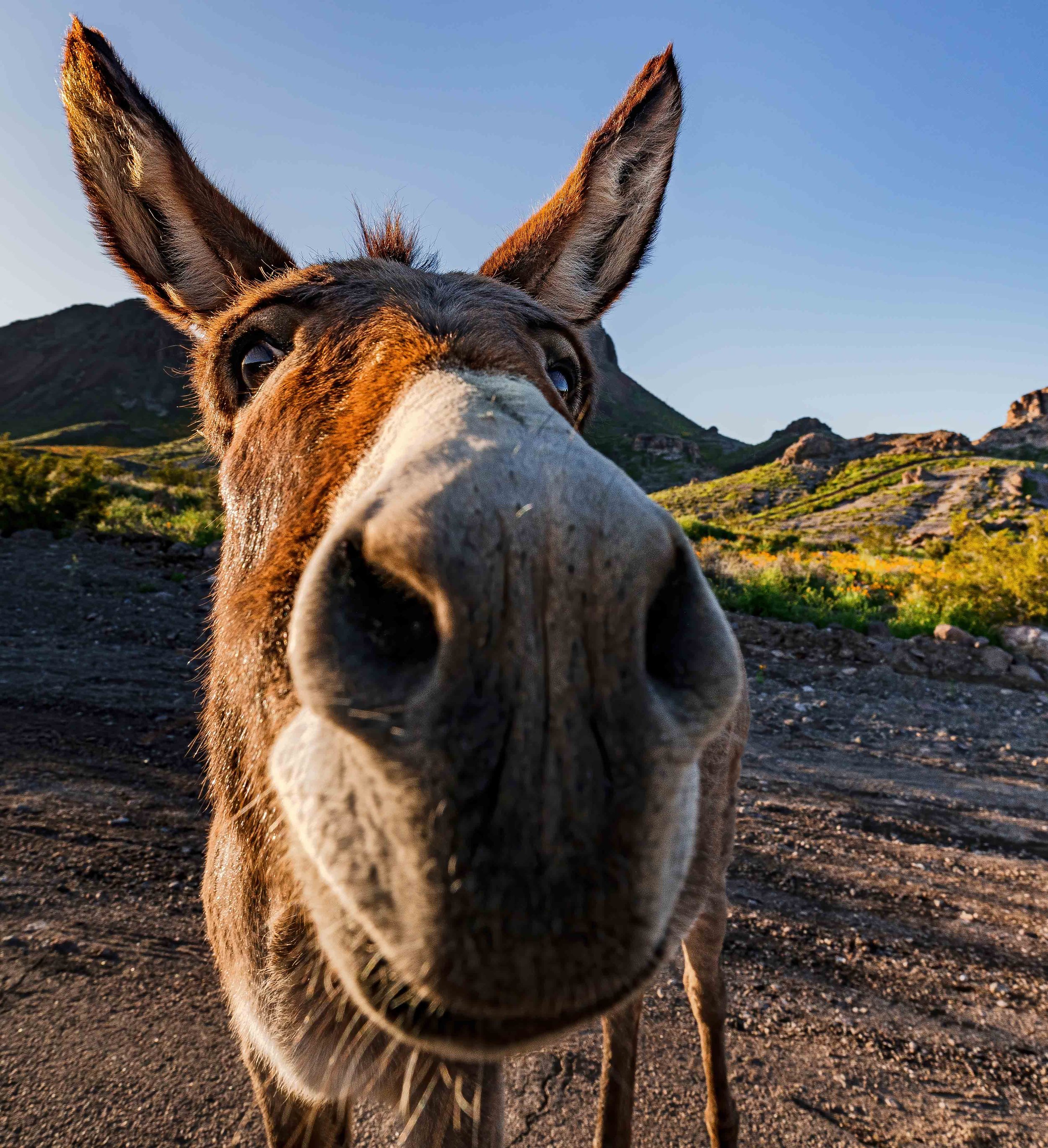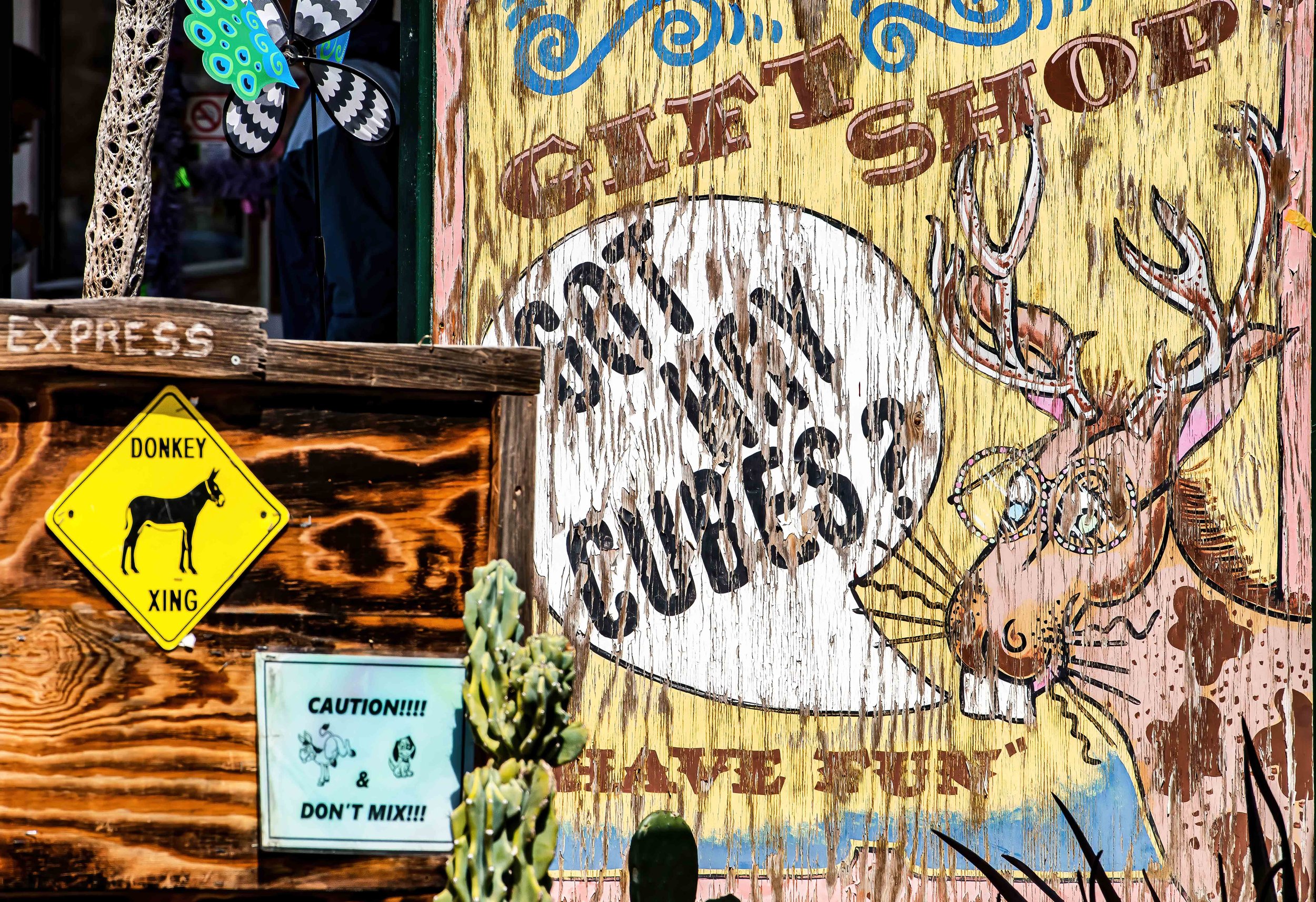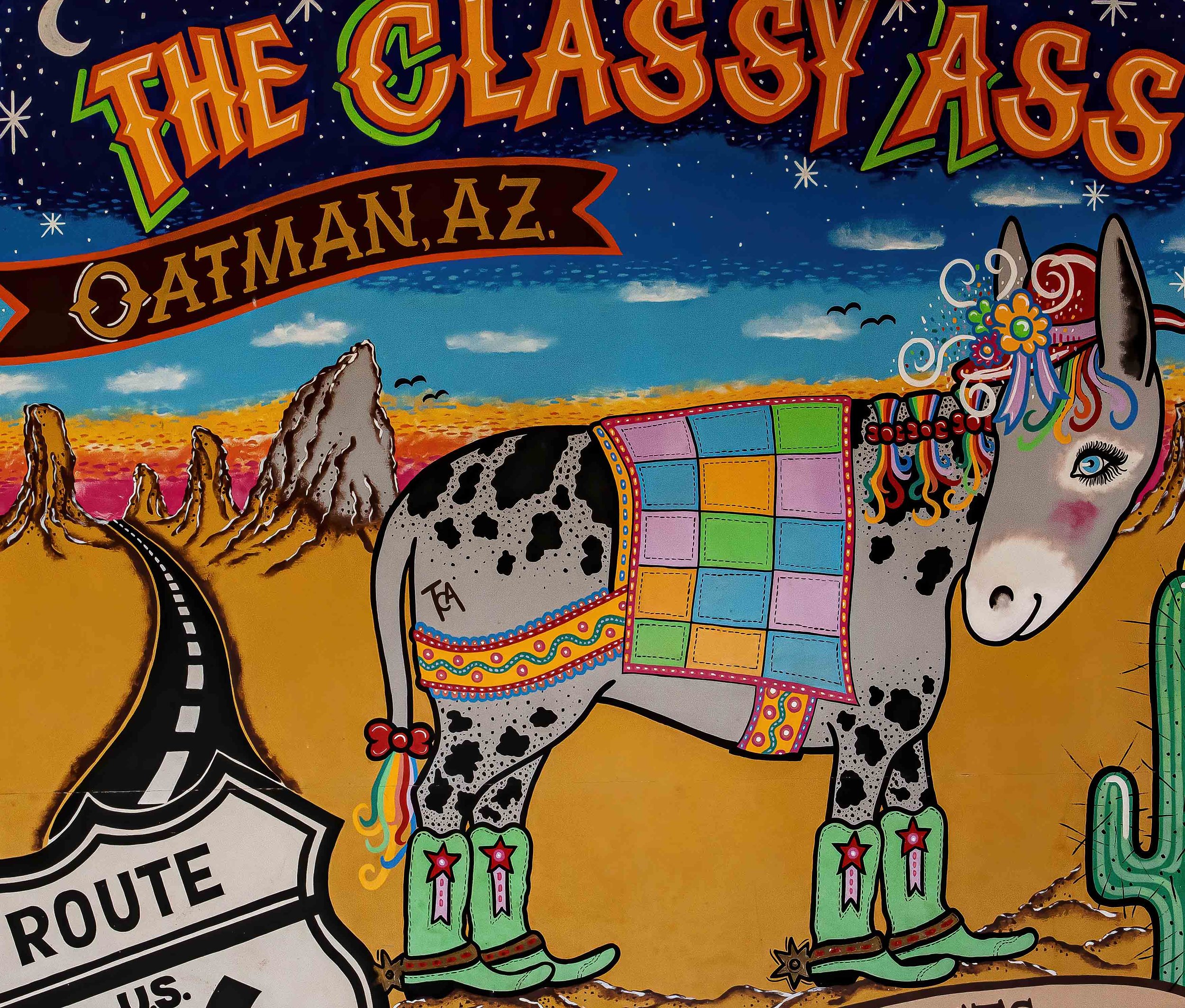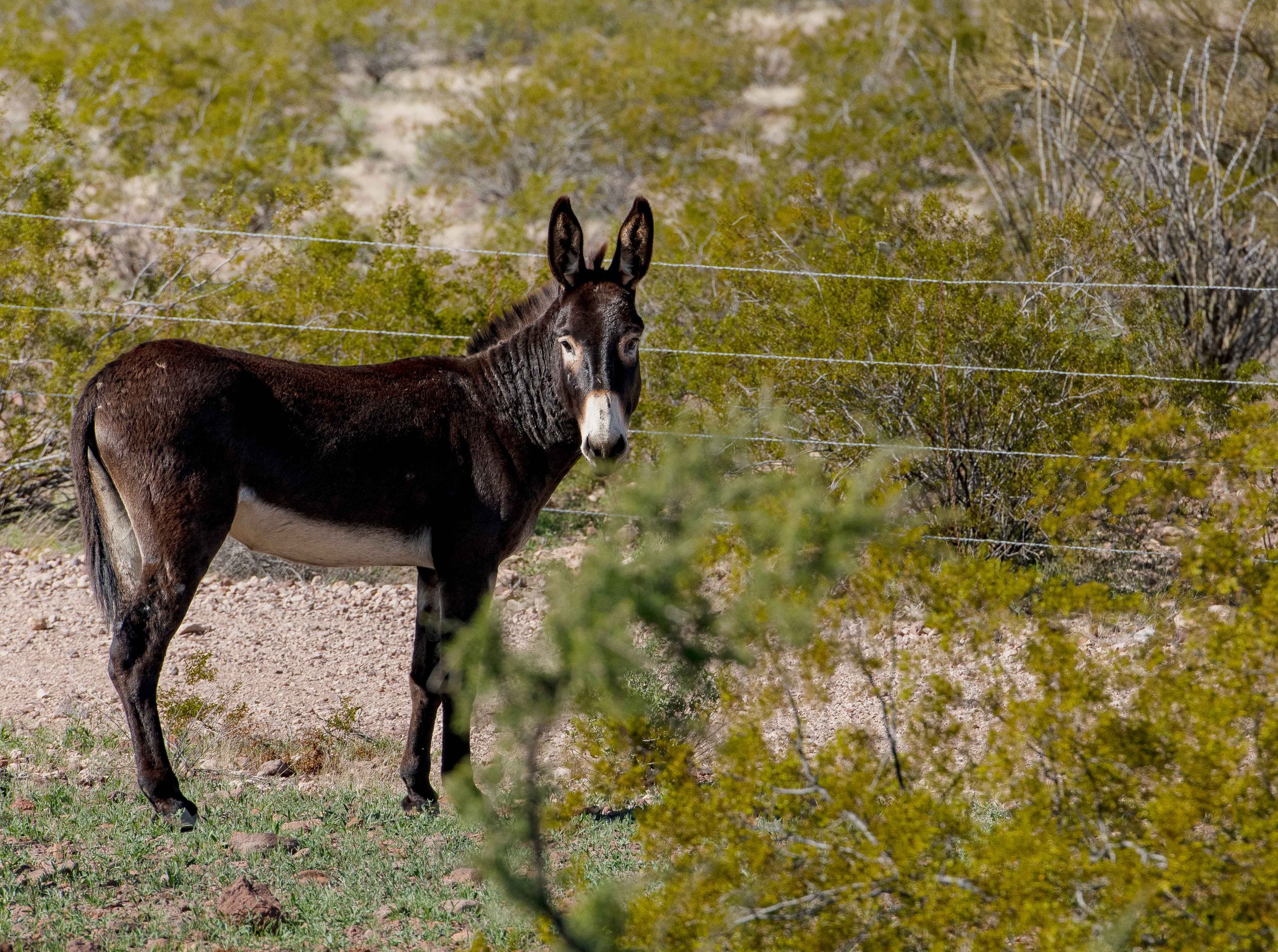Introduced: Wild Burros of the Southwest
Wild burros, feral donkeys, wild donks, southwest burros, wild hee-haws… these creatures are a key part of the American Southwest to many of us when we imagine scenes of desert places. Especially desert places that are correlated with tales of the “wild west” and Americana nostalgia along Route 66.
Wild burros are such a key aspect of this nostalgia that they are protected federally, along with wild horses.
Do a little research online though, and you’ll quickly learn that wild burros are an invasive species in this country, having been introduced here in the 1500s. Learn more about that here! During the gold rush years, even more donkeys were brought to the desert west and when the mines dried up, burros were abandoned. Left to fend for themselves. Which went really well for them as a species.
The deserts of the southwest have allowed certain animals to thrive, but this poses a challenge for native species. Wild burros play a significant role in this scenario by consuming resources and causing destruction. These hardy creatures, well-adapted to desert life with heat resistance and few natural predators, quickly established themselves in American deserts. However, it's essential to recognize that they are not native; they were introduced.
Like many introduced species, wild burros have become a concern for the biomes of the southwest. Their impact is quite troublesome.
The presence of wild burros sparks controversy in wildlife and land conservation efforts. On the bright side, they contribute to the economy of small towns as tourists visit from near and far to observe and feed these animals. However, when animal-tourism becomes a driving force in the economy, complexities arise…
